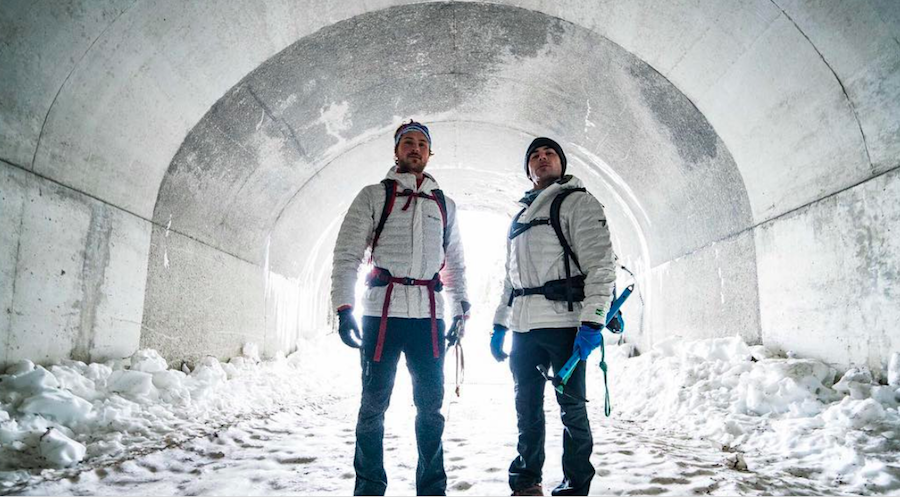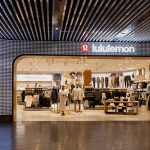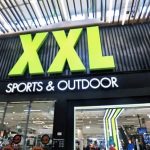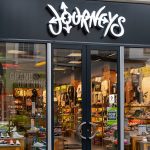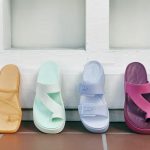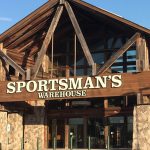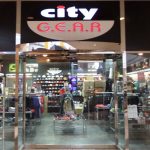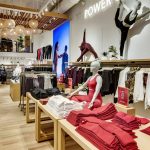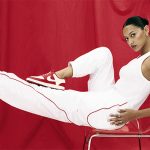Columbia Sportswear reported third-quarter results that came in better than expected as growth overseas and in its U.S. direct-to-consumer (DTC) business offset another steep decline in U.S. wholesale revenues.
On a conference call with analysts, however, Tim Boyle, CEO, said that based on advance orders for Spring 2018, “we’re optimistic that we will continue to generate global growth and then our U.S. wholesale business will return to growth in the first half of 2018.”
In the quarter ended September 30, sales inched up 0.2 percent to $747.4 million. Net income increased 4.9 percent to $87.7 million, or $1.25, including expenses of $2.1 million net of tax, or 3 cents per share, related to the company’s “Project CONNECT” operating model assessment initiative.
Results exceeded Wall Street’s consensus estimate of $1.15 on sales of $734.9 million. The company basically reiterated its full-year earnings outlook.
In the United States, sales declined 5.9 percent to $456 million and were off 6 percent on a currency-neutral basis. A low-double-digit percentage decline in wholesale was only partially offset by low-double-digit percentage growth in DTC. The wholesale decline worsened from earlier in the year, with wholesale sales off high single digits for the full nine-month period.
‘The structural shifts that continue to alter the U.S. wholesale landscape are a meaningful headwind,” said Boyle on the call.
Boyle said nearly half of that year-to-date decline is the direct result of an expected timing shift of U.S. wholesale deliveries from September into October, with the vast majority of the remainder reflecting wholesale customers bankruptcies and store closures. Adjusting for the timing shift, third-quarter U.S. sales would have declined only 5 percent rather than the reported 12 percent decline. The U.S. region would have also been essentially flat absence the shift.
U.S. DTC, which conversely picked up momentum versus a high-single-digit gain in the nine months, was helped by a combination of comp store growth, contribution from new stores and high-single-digit growth in e-commerce.
Boyle also noted that despite the disruption in U.S. markets, Columbia improved its operating margin through the first nine months by 20 basis points in the U.S. market, excluding Project CONNECT costs.
Outside the U.S., Columbia generated sales growth and improved profitability in every other region in the quarter.
The EMEA region showed 19.9 percent growth (15 percent constant-currency), to $87.5 million, including a net sales increase of more than 20 percent (high-teen percent constant-currency) in the company’s European wholesale and DTC businesses, and a low-double-digit percentage increase in sales to EMEA distributors. Continued improvement is being seen in the Russian market.
By brand, the EMEA gains were led by broad-based Columbia brand growth across product categories, customers and countries as well as a 30 percent growth from Sorel. After achieving breakeven profitability in 2016, the European wholesale and direct-to-consumer businesses is projected to be profitable in 2017.
In the LAAP region, sales grew 9.1 percent (11 percent constant-currency), to $123.0 million, reflecting increased sales to LAAP distributors and increased sales in China and Korea, partially offset by a small decline in Japan. The region benefited from a favorable shift in the timing of shipments and increased advanced fall season orders.
In Canada, sales gained 7.6 percent (4 percent constant-currency), to $80.9 million. The improvement was driven by the Colombia brand and Sorel, largely due to a favorable timing shift in wholesale shipments.
By categories globally, apparel, accessories and equipment sales increased 1 percent on both a reported and currency-neutral basis, to $580 million while footwear decreased 2.4 percent (3 percent constant-currency) to $167.4 million.
By brand, Columbia brand sales increased 1.9 percent to $598.3 million and gained 2 percent currency-neutral.
Boyle said the company believes Columbia brand is gaining U.S. wholesale market share in this challenging environment and that wholesale channel inventories “are generally healthy as we await the arrival of seasonal weather in the holiday shopping season.”
Supporting the brand has been the installation of more than 150 Columbia shop-in-shops with plans to nearly double that number by the end of 2017. Said Boyle, “Our investment in this rollout reflects our commitment to enhance the consumer’s experience within our global wholesale channels and also speaks to the confidence that our customer have in us as one of their most reliable partners and in the Columbia brand as one of their most consistent performers.”
Columbia’s Tested Tough brand marketing platform also “continues to drive a unified global message about enabling consumers to enjoy the outdoors longer.” The second year of its Directors Of Toughness program, which concludes this month, drove hundreds of millions of consumer impressions on social media channels. This fall, an extensive Columbia Warm campaign will support the brand’s fall push.
“This effort kicked up in September where the campaign focused on our partnership in outfitting deal with the UK National Park System and was followed by a content marketing partnership, featuring actor and celebrity, Zac Efron and his brother Dylan that has already driven over 400 million impressions,” said Boyle.
Columbia is still expected to show low-single-digit global growth, with increases in its U.S. DTC channel in every international region offsetting an anticipated decline in U.S. wholesale.
Sorel’s sales decreased 6.7 percent (8 percent constant-currency) in the quarter to $81.7 million. But with a full line-up to support its fall offerings, Sorel’s guidance for the year was improved to high-single-digit growth, up from mid-single-digit growth.
Boyle said Sorel has a full line-up to support its fall offerings. Next week, the brand’s 4,000-pair limited boot collaboration with Paris-based luxury design house Chloé launches at premier retailers such as Nordstrom, Barneys and Holt Renfrew. The boot, selling for more than $500, is “garnering traction with global fashion press.”
Sorel also has a new marketing campaign that “reinforces Sorel’s position as the most fashionable brand in outdoor and the most outdoor brand in fashion.” The effort includes street-level window executions at stores in New York City and an extensive social media component featuring eight up-and-coming fashion influencers.
Prana’s sales decreased 3.4 percent (3 percent constant-currency) to $36.8 million. During the quarter, Russ Hopcus, Columbia’s former SVP of North America sales, was promoted to Prana’s president. Said Boyle, “I’m confident in his and his team’s ability to magnify Prana’s message of sustainability and healthy active free-spirited lifestyle to drive growth.” Early fall sell-through at key wholesale customers has been strong, led by yoga and swim categories.
Prana is still expected to show low single-digit growth for the year “as it overcomes headwinds caused by the U.S. wholesale market disruptions,” said Boyle.
Mountain Hardwear’s sales were down 3.6 percent (4 percent constant-currency) to $29.4 million. Boyle said Mountain Hardwear’s new brand president, Joe Vernachio, who formerly headed product and operations at The North Face, “continues to build out a new product team that is working to create a compelling high-performance product lineup. Mountain Hardwear’s innovative Stretch Down products are performing well at retail.”
Mountain Hardwear is now expected to show a low-single-digit percentage sales decline for the full year, versus a projection for a high-single-digit decline previously.
The bottom line was helped by an expansion in gross margin by 30 basis points to 46.7 percent. A favorable sourcing environment and favorable foreign currency hedge rates in Japan, Canada and Europe offset a higher proportion of sales to international distributors, which generally carry lower gross margins.
SG&A expenses as a percent of sales increased 70 basis points to 30.8 percent. Expenses rose 3 percent overall due to its expanding global DTC businesses and expenses to cover Project CONNECT.
Boyle said Columbia is “moving steadily forward” on Project CONNECT, an initiative launched early this summer designed to drive revenue, capture cost of sales efficiencies, generate SG&A savings and improve its marketing effectiveness. Near-term benefits are expected to be seen in areas such as e-commerce optimization, indirect procurement, marketing effectiveness and refining the promotional cadence in its DTC channels. Requiring longer lead times, benefits to areas such as assortment optimization and product development may not be fully realized until 2020 or later.
Boyle added, “For now I want to reinforce how committed we are to Project CONNECT and how confident we are that there are significant opportunities for us to transform our business, increase our growth driving demand creation investments, expand our operational capabilities and further improve our profitability.”
Looking ahead, Columbia continues to expect sales growth of approximately 3 percent. Earnings are now expected to range between $2.60 to $2.70 per share, down from $2.74 to $2.84 previously. The guidance change reflects the inclusion of $15 million ($9.5 million net of tax, or 14 cents per diluted share) in costs tied to Project CONNECT.
The company expects fiscal year 2017 gross margins to improve by approximately 20 basis points, down from 30 basis-points improvement previously. SG&A expenses, now including the Project CONNECT costs, are projected to increase approximately 5.4 percent, resulting in approximately 80 basis points of SG&A expense deleverage. Previously, SG&A expense was expected to increase at a rate slightly higher than net sales, resulting in approximately 30 basis points of SG&A expense deleverage.
Photo Columbia Sportswear

